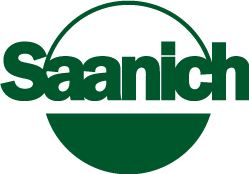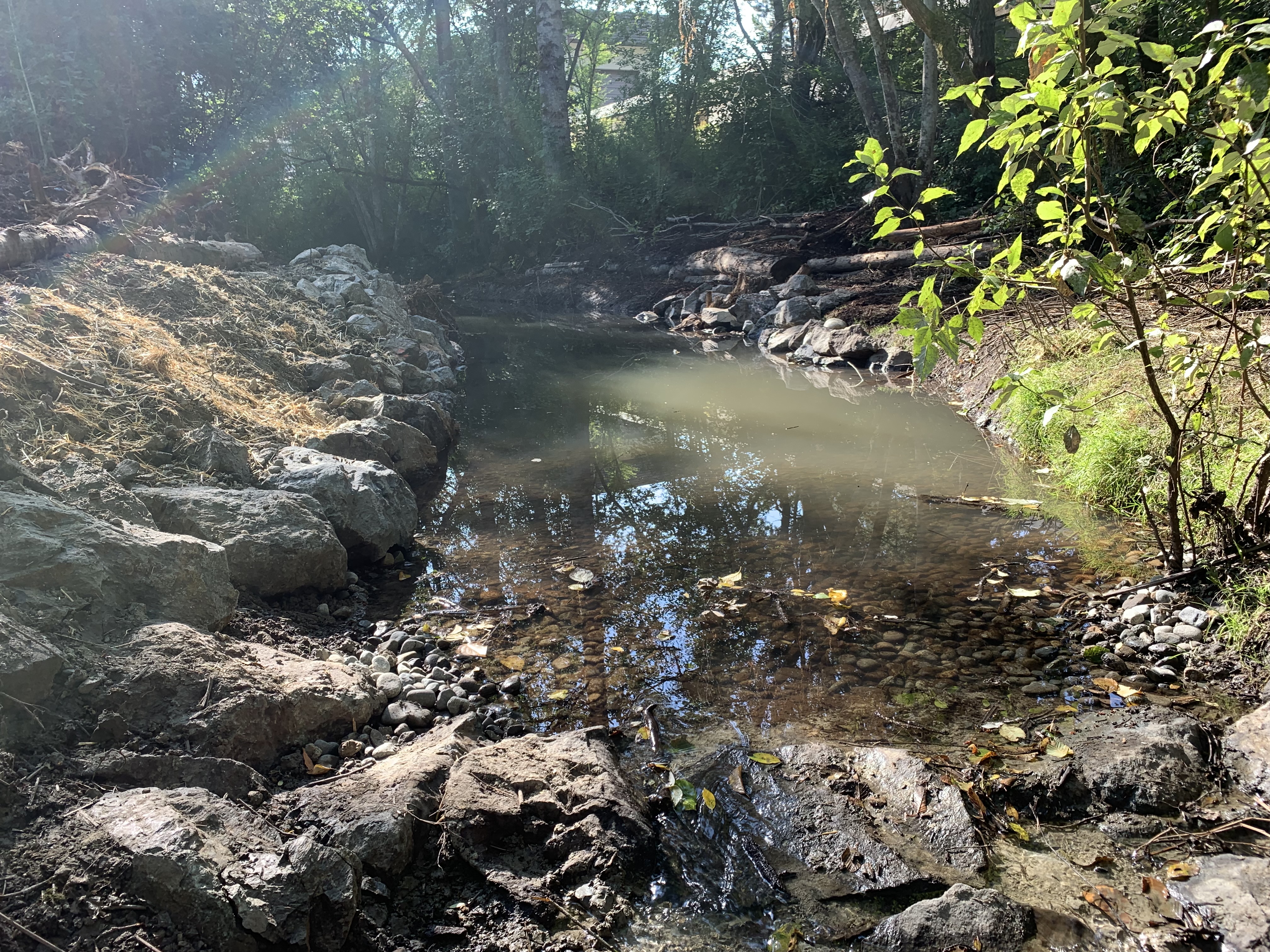Welcome to the UN Decade on Ecosystem Restoration!

The United Nations declared the Decade on Ecosystem Restoration (2021-2030) and calls upon everyone — from governments to multinational companies, to school children — to get involved in reviving damaged ecosystems. Saanich has committed to participating in this exciting initiative.
For a great example of ecosystem restoration check out this video featuring the Colquitz River Restoration at East Copley Park.
Ecological restoration work is an important part of:
- supporting biodiversity,
- remedying soils,
- contributing to reconciliation by learning about and planting native species that are intrinsically linked to Indigenous peoples,
- and fostering our own relationship with nature.
In line with this initiative, we are committed to stewardship and restoring natural habitats through initiatives with partners and volunteers. Find out more below!
We have increased the amount of restoration projects over the last few years; from waterway restoration on Swan and Mount Douglas Creeks to small sites scattered throughout our many natural area parks.
Invasive Plant Species Removal
Staff and volunteers are creating opportunities to restore sites with native plants like Snowberry, Sword Fern, Salal, Hardhack, Oregon Grape, Rose, Elderberry, Mock Orange and many more.
- Pulling Together Volunteer Program
staff and volunteers spend more than 10,000 hours each year removing invasive species.
- Many school and youth groups also help get rid of invasive plants.
Trail Closures
Please support restoration work by staying on dedicated trails and keeping pets out of restoration areas as these activities may have a negative impact by:
- Compacting soil
- Damaging new plants
- Spreading invasive plants, such as Garlic Mustard spread because of off-trail use in Mount Douglas Park
Natural areas parks have well established trail systems to help the public explore and experience the diverse ecosystems within Saanich.
We use split rail fencing, mulching and planting to restrict access and restore many of these sites.
Creek Restoration
We’re restoring Douglas Creek to help restore fish habitat and bank stability. Parks and Public Works crews have worked on this project together.
Other waterway restoration projects by staff and volunteers include Swan, Todd, Bowker and Colquitz Creeks.
These habitat restoration projects have significantly enhanced fish habitat. We have many dedicated Saanich residents to thank.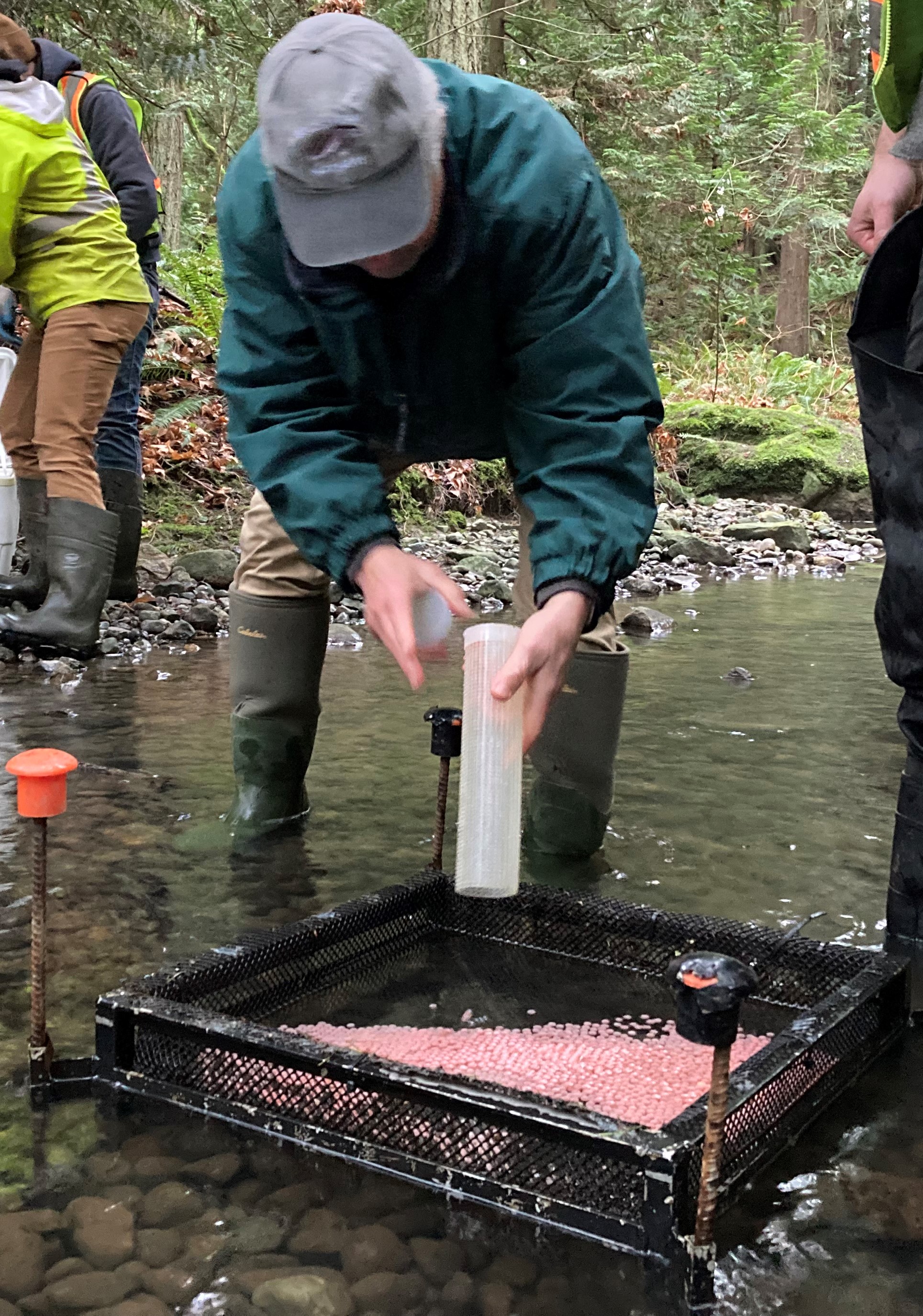
We are also managing Purple Loosestrife and Yellow Flag Iris along several water ways including Colquitz Creek and Viaduct Flats.
Volunteers carefully dig out invasive plants by hand before they go to seed. This slows the spread of the plant and helps native species re-establish.
Feature projects
Lohbrunner Park
Thanks to a generous bequest from Joan Stewart to the Saanich Legacy Foundation for the purpose of conservation work in Lohbrunner Park, Saanich staff were able to achieve some important invasive species management and restoration work in 2024. Work included removal of invasive plant species including Yello archangel, English ivy, Himalayan blackberry, Common periwinkle, and English holly. This was followed with replanting with native species including Red alder, Douglas fir, Ocean spray, June plum, Salmonberry, Snowberry, Sword fern and Skunk cabbage.
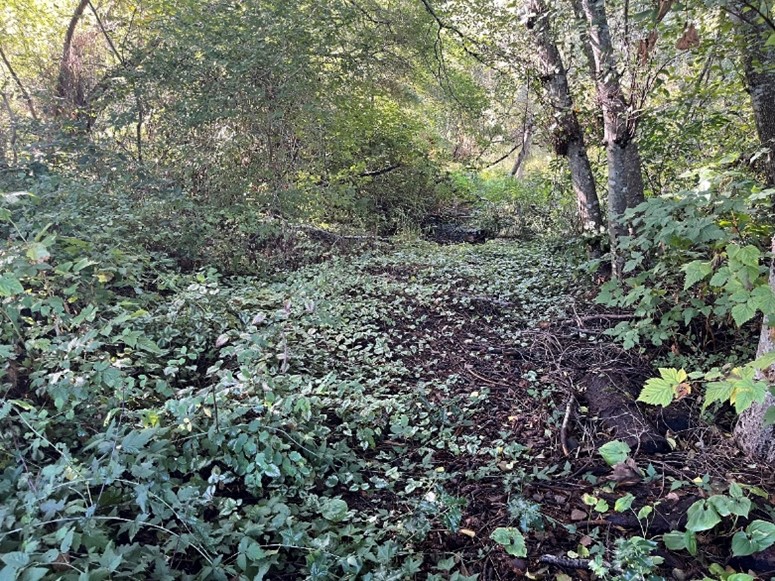
Area before Yellow archangel removal
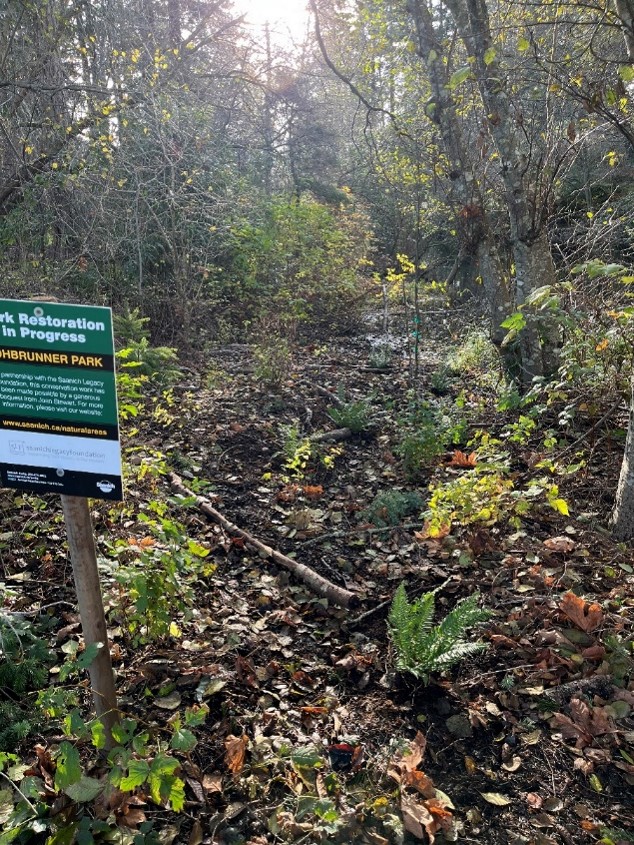 Area after Yellow Archangel removed and native plants added
Area after Yellow Archangel removed and native plants added
See the Lohbrunner Park Saanich Legacy Foundation Partnership Report 2024 for more details.
Gabo Creek through Moor Park (Royal Oak neighbourhood)
Restoration and maintenance work in Gabo Creek through Moor Park started in summer of 2024 with planting of native trees and shrubs happening in the fall.
This project is part of the District of Saanich’s ongoing work within the Colquitz River watershed to upgrade the storm water capacity of the existing creeks, and tributaries, as well as improve salmonoid and aquatic invertebrate habitat. Historically, as a tributary to the Colquitz River, Gabo Creek played an important role in fish life cycles providing spawning, foraging, and refuge opportunities for Coho salmon and sea-run Cutthroat trout. While these opportunities have been reduced in recent years, mostly due to sediment deposition from nearby roads and developments, salmon and trout fry are still seen annually.
Through partnership with Peninsula Stream Society, this project aims to remove large amounts of unwanted sediment, restore spawning, foraging, and refuge opportunities for salmonoids and invertebrates, create in-stream features that slow and filter water lessening the burden on stormwater infrastructure during heavy rain events, and provide additional planting and habitat opportunities within the riparian areas (creek banks) that will help boost biodiversity.
Cuthbert Holmes Park
Cuthbert Holmes Park has undergone many changes in the past, and there are many exciting changes yet to come. These changes will be completed over 5 years and will further goals set out in the Cuthbert Holmes/Tillicum Parks Management Plan. Ongoing invasive plant removal and addition of native plants is done collaborately with community members, school groups, corporate partners, and registered volunteers. 
A self-guided interpretive video helps shed light on the key habitat restoration projects and why they matter. Check out more about work going on in this park.

Short video of river otters exploring Cuthbert Holmes!
Layritz Park
The Ministry of Transportation and Infrastructure funded Garry Oak restoration project at Layritz Park is in its second year of a ten-year restoration commitment. Parks’ Natural Areas staff have been removing invasive plant species and planting native trees, shrubs, and herbaceous plants to help diversify the Garry Oak ecosystem.
Alongside this, a new pathway and boardwalk have just been built to help buffer the restoration work from invasive species and to provide trail users the ability to interact with the restoration project. The ~37m boardwalk was built through a sensitive wet site that has many diverse plants, in the hope not to disturb the slow seepage.
Staff will also build benches and other features on the new viewing platform to provide our community with a destination picnic site. In the future, interpretive signs will be installed along the trail to help inform our community about Saanich’s Naturescape program and our commitment to the United Nations Decade on Ecosystem restoration. Over one hundred native trees will also be planted in Layritz park later this fall by Urban Forestry staff.

